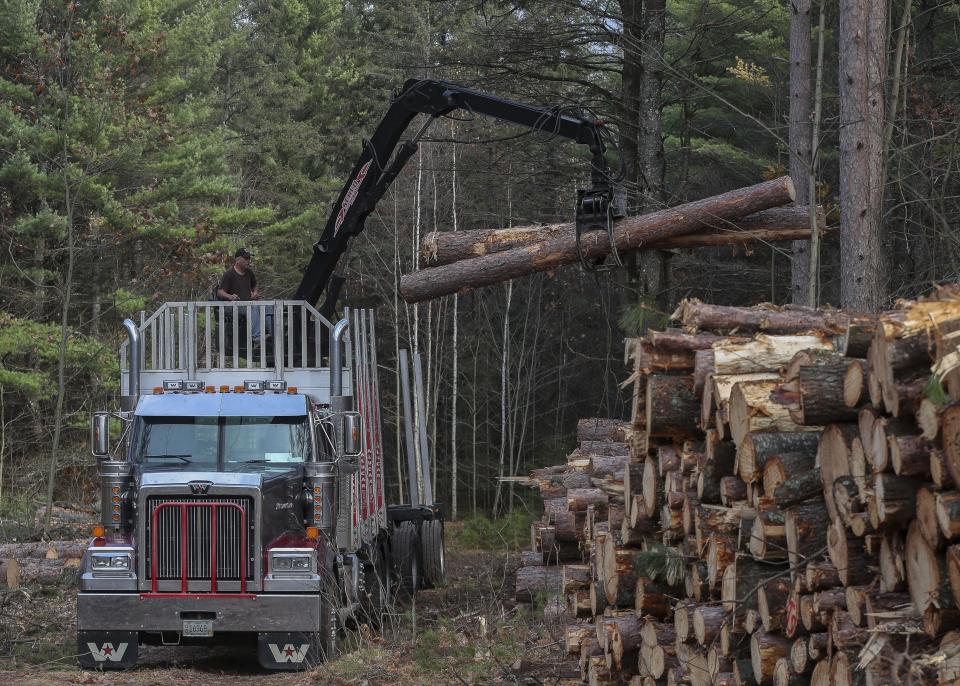Wisconsin sees fewer workplace fatalities generally, but there's higher risk in agriculture, forestry industries nationally
The number of people who have died at work in Wisconsin has declined in recent years, a new report shows.
The American Federation of Labor and Congress of Industrial Organizations released its 32nd annual report titled "Death on the Job: The Toll of Neglect" in late April, which provides a state-by-state analysis of worker safety and health in the United States, based on the most recently available data.
Nationally, there were 5,190 workplace fatalities in 2021, with a rate of 3.6 fatal job injuries per 100,000 workers, the according to the report. That rate increased from 2020, but returned to 2016 levels.
Wisconsin's 2021 fatality rate was slightly lower than the national, at 3.4 deaths per 100,000 workers, according to the report.
“Every worker in Wisconsin has a right to be safe on the job, and this report shows we still have a lot of work to do to address this moral imperative,” Stephanie Bloomingdale, Wisconsin AFL-CIO president, said in a news release.
“We need to strengthen our collective bargaining rights," she said, "to help ensure that safety concerns are addressed in the workplace so all fatalities and injuries that can be prevented are indeed prevented."
What else did the report say about Wisconsin?
The number of workplace fatalities in the state has decreased in recent years from 114 in 2018.
In 2021, 105 workers died on the job in Wisconsin. Of those:
21 were from assaults and violent acts;
36 resulted from transportation incidents;
Four were caused by fires or explosions;
13 were from falls;
13 were due to exposures to harmful substances or environments;
18 were from contact with objects or equipment.
In 2021, the rate of workplace injuries and illnesses in the private industry in Wisconsin was 3.2 per 100 workers, higher than the national rate of 2.7.
How does Wisconsin compare to other states?
At 3.4 deaths per 100,000 workers, Wisconsin ranked 24th for fatalities, the report says. The states with the highest fatality rates in 2021 were:
Wyoming (10.4 per 100,000 workers)
North Dakota (9.0 per 100,000 workers)
Montana (8.0 per 100,000 workers)
Louisiana (7.7 per 100,000 workers)
Alaska (6.2 per 100,000 workers)
New Mexico (6.2 per 100,000 workers)
Certain industries also reported higher fatality rates
According to the report, industries that saw more fatalities nationally include:
Agriculture, forestry and fishing and hunting (19.5 per 100,000 workers)
Transportation and warehousing (14.5 per 100,000 workers)
Mining, quarrying and oil and gas extraction (14.2 per 100,000 workers)
Construction (9.4 per 100,000 workers)
Wholesale trade (5.1 per 100,000 workers)

What are some of the report's national takeaways?
There was "a troubling rise in worker deaths, particularly among Black and Latino workers," according to the AFL-CIO.
The fatality rate for Black workers grew from 3.5 to 4.0 per 100,000 workers from 2020 to 2021, and 653 Black workers died in 2021, "the highest number in at least 19 years," the report states.
"Latino workers have the greatest risk of dying on the job with a fatality rate at 4.5 per 100,000 workers that has grown by 13% over the past decade" according to the news release. Of the 1,130 deaths of Latino workers in 2021, "the overwhelming majority who died were immigrants."
The fatality rate for white workers in 2021 was 3.4 per 100,000 workers.
Generally, "older workers and minors are at high risk," the report states, and "many children, mostly migrants, have become the focus of stark exploitation, working in dangerous conditions."
Twenty-four children younger than 18 died on the job in 2021.
More: Wisconsin company illegally employed more than 100 children in hazardous work
"The true impact of COVID-19 infections due to workplace exposures is unknown," according to the report, but "limited data show that more than 1.5 million nursing home workers have been infected with COVID-19 and more than 3,000 have died."
Report recommends steps to take
The Occupational Safety and Health Act has been in effect for more than 50 years since Congress passed the law to protect workers' safety, and "there has been significant progress toward improving working conditions and protecting workers from job injuries, illnesses and deaths" in that time, the report states. "... But much more progress is needed."
The Occupational Safety and Health Administration needs more resources and inspectors, and penalties for violations are "too weak," according to the report.
"Workplace violence is a growing and serious threat, particularly to women workers and those in the health care and social services," and the report recommends that OSHA create a workplace violence standard and that the U.S. Senate pass the Workplace Violence Prevention for Health Care and Social Service Workers Act — a bipartisan bill introduced by Sen. Tammy Baldwin (D-Wis.) last month — to address this issue.
More: Sen. Tammy Baldwin introduces legislation aiming to protect healthcare workers from attack
Overall, "these deaths are preventable. Employers should be held accountable for the working conditions on jobsites, and our lawmakers at every level must use their power to properly enforce the policies designed to protect us," AFL-CIO Safety and Health Director Rebecca Reindel said in the news release.
The report's full findings and recommendations are available at aflcio.org/reports/death-job-toll-neglect-2023.
Reach Becky Jacobs at bjacobs@gannett.com or 920-993-7117. Follow her on Twitter at @ruthyjacobs.
This article originally appeared on Appleton Post-Crescent: AFL-CIO report says Wisconsin worker fatalities below national average
